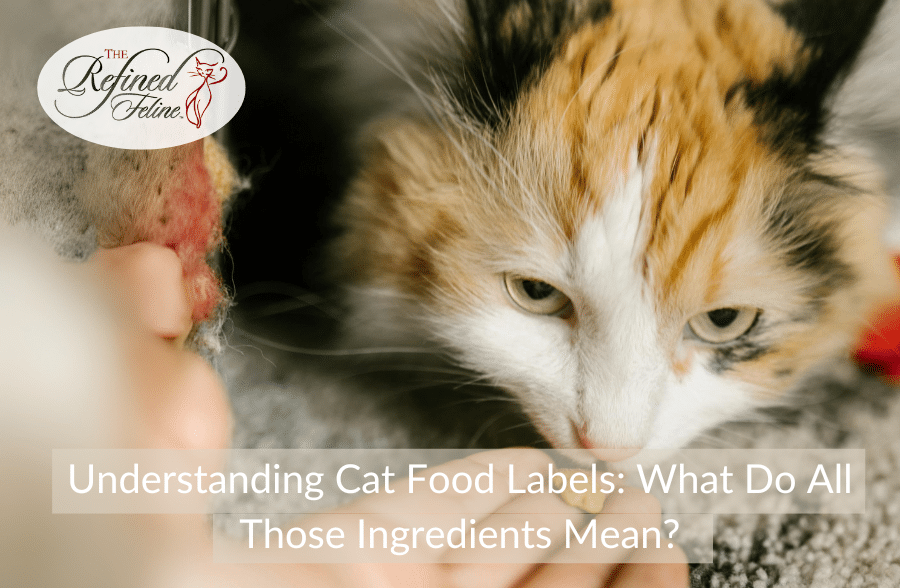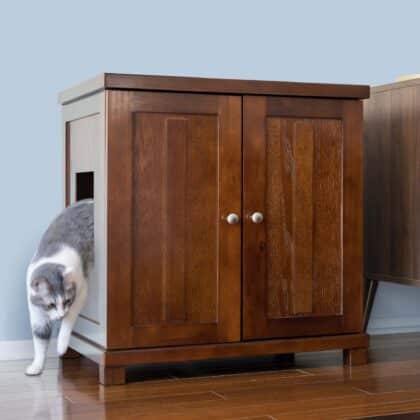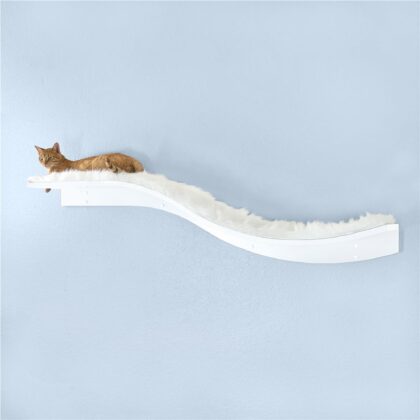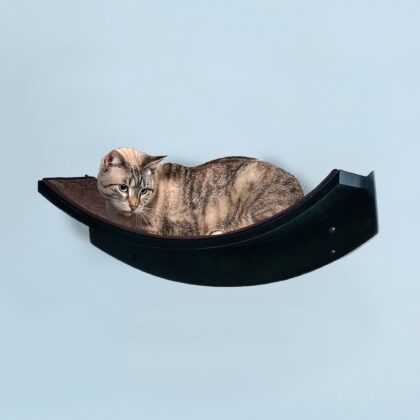
Understanding Cat Food Labels: What Do All Those Ingredients Mean?
What’s Really in Your Cat’s Food Bowl?
Walking down pet store aisles can feel overwhelming. Bright packages claim various benefits, but what matters most lies in the small print—those mysterious ingredients that directly impact your cat’s health, energy levels, and longevity. A well-fed cat lives more actively, engages with its environment, like exploring modern cat trees & towers, and maintains optimal weight.
Reading cat food labels requires understanding specialized terminology. Many cat owners simply pour kibble into bowls without realizing that small adjustments in food selection and storage methods dramatically affect feline health outcomes.
Breaking Down Each Section of Cat Food Labels
The Ingredients List: Why Order Matters Most
What should be the first ingredient in cat food? Quality protein sets the foundation for feline health. Manufacturers must list ingredients in descending order by weight before cooking. The first 3-5 ingredients represent the majority of what goes into each kibble piece.
Look specifically for:
- Named animal proteins leading the list (chicken, turkey, salmon)
- Avoid vague descriptors like “meat by-products” or “poultry meal” in top positions
- Recognize that moisture content affects positioning (fresh meat weighs more due to water content)
Good examples: ✅ “Chicken, chicken liver, salmon meal…” Bad examples: ❌ “Corn gluten meal, meat by-products, brewers rice…”
As obligate carnivores, cats physiologically require meat-based diets. Plant proteins cannot provide all essential amino acids cats need regardless of protein percentage.
Identifying Problematic Ingredients to Avoid
The list of bad ingredients in cat food continues growing as nutrition science advances. Watch carefully for:
- BHA, BHT, ethoxyquin: Synthetic preservatives linked to potential health issues
- Artificial colors (Red #40, Blue #2): Cats care nothing about food appearance—colors exist purely for human marketing
- Corn gluten meal as primary protein: Inexpensive filler replacing higher-quality meat proteins
- Carrageenan: Potential inflammatory agent commonly found in wet foods
- Propylene glycol: Used for moisture control in semi-moist foods
- Generic meat references: “Meat meal” or “animal fat” signals undefined, inconsistent sources
Many manufacturers employ clever labeling tactics. “Chicken flavor” requires minimal actual chicken to qualify, while “chicken” must predominate among ingredients.
Guaranteed Analysis: Interpreting Nutritional Percentages
Every cat food package includes a guaranteed analysis displaying minimum/maximum percentages of key nutrients. Understanding helps compare cat food ingredients meaningfully:
- Crude protein: Minimum percentage (higher generally better for cats)
- Crude fat: Minimum percentage (essential energy source)
- Crude fiber: Maximum percentage (supports digestive function)
- Moisture: Maximum percentage (affects nutrient concentration)
What is crude protein in cat food? The term “crude” refers to the measurement method rather than quality. Protein percentage alone doesn’t reveal amino acid profile or digestibility—both crucial factors in actual nutrition value.
How much crude fiber should be in cat food? Most healthy adult cats thrive with approximately 2-4% fiber content. Higher fiber percentages often appear in weight management formulas; lower percentages in kitten foods designed for growth.
Recommended guaranteed analysis cat food standards vary depending on life stage:
- Adult cats: 26-30% protein, 15-20% fat
- Growing kittens: 35%+ protein, 18%+ fat
- Senior cats: 28-30% protein, 10-15% fat
When comparing products, account for moisture differences. Dry food (typically 10% moisture) shows higher percentages than wet food (75-80% moisture) even when nutritional value remains identical.
Nutritional Adequacy Statement: AAFCO Standards
Locate statements confirming compliance with Association of American Feed Control Officials (AAFCO) standards:
- “[Product] is formulated to meet nutritional levels established by AAFCO Cat Food Nutrient Profiles for [life stage].” OR
- “Animal feeding tests using AAFCO procedures substantiate that [Product] provides complete and balanced nutrition for [life stage].”
The second statement indicates actual feeding trials occurred—generally considered stronger verification than formulation-based claims.
Life stages typically covered include:
- Growth (kittens)
- Maintenance (adult cats)
- All life stages (suitable from kittenhood through seniority)
Calorie Content & Feeding Guidelines
Locate calorie density (kcal/cup or kcal/can) and portion recommendations on packaging. Consider such guidelines as starting points—adjust based on:
- Activity levels (indoor vs. outdoor lifestyle)
- Individual metabolism (varies significantly between cats)
- Age (younger cats require more energy)
- Health conditions (certain diseases alter requirements)
Monitor body condition rather than relying solely on feeding charts. You should feel ribs without pressing hard but not see them visually on most cats.
Advanced Label Analysis: Becoming a Cat Food Detective
Comparing Dry vs. Wet Food Labels
Dry and wet foods present ingredients differently due to moisture content. When using a cat food ingredients checker app or tool, remember:
For dry kibble:
- Higher protein/fat percentages (appears concentrated due to low moisture)
- Longer shelf life (check “best by” dates carefully)
- More carbohydrate sources typically listed
For wet foods:
- More water/broth ingredients
- Typically shorter ingredient lists
- Gelling agents like guar gum or xanthan gum
When feeding both formats, calculate total nutrition across combined sources for accurate assessment.
Decoding Prescription and Specialty Diet Labels
Veterinary or prescription diets carry additional information:
- Medical conditions addressed
- Veterinary authorization requirements
- Modified nutrient profiles
Many prescription foods require adjusting traditional label expectations. For instance, kidney disease diets intentionally feature lower protein levels despite protein normally benefiting healthy cats.
Manufacturing Information & Quality Control
Additional label details reveal:
- Production location
- Recall history
- Batch identification numbers
- Company contact information
For imported foods, the country of origin must appear clearly. Manufacturing location offers insight into quality control standards and safety protocols followed.
Food Storage: Preserving Nutrition After Purchase
Why Proper Storage Makes or Breaks Nutrition
Even premium cat foods degrade quickly with improper storage. Fat oxidation creates rancidity, destroying vitamins and causing potential digestive upset.
Storage Best Practices Beyond Containers
Follow additional guidelines:
- Store in cool, dry locations below 70°F when possible
- Keep away from direct sunlight exposure
- Use opened dry food within 6 weeks maximum
- Never mix old food with fresh batches
- Clean storage containers between refills thoroughly
Making Informed Choices Beyond Basic Label Reading
Matching Food to Your Cat’s Individual Needs
Consider how your cat uses living space and energy:
- Active cats utilizing cat wall shelves for climbing, or exploring complex modern cat trees & towers, burn more calories.
- Sedentary cats resting primarily in cozy cat beds require fewer calories.
- Multi-cat households often need different formulations for different activity levels.
Recognizing When Diet Changes Become Necessary
Watch for signals indicating dietary adjustments:
- Excessive shedding despite regular grooming
- Lethargy or reduced play engagement
- Frequent hairballs despite brushing
- Unexplained weight changes
- Poor coat condition or dandruff
Gradual transitions prevent digestive upset. Mix increasing amounts of new food with decreasing amounts of current food over 7-10 days for optimal adjustment.
Creating a Complete Nutrition Station
Consider pairing feeding areas with:
- Fresh water sources (fountains encourage hydration)
- Appropriate height platforms (elevated stations reduce strain, perhaps on a low shelf or a dedicated feeding station)
- Easy-clean surfaces (feeding zones attract bacteria). Ensure the area around the food, perhaps near their stylish cat litter box furniture (which keeps other areas tidy), is easy to wipe down.
FAQ: Common Questions About Cat Food Labels
How do you read food label ingredients?
Start with the first 5 ingredients which make up most of the food. Look for named animal proteins (chicken, turkey, salmon) in top positions. Avoid foods with vague terms like “meat by-products” or excessive grains listed before proteins. Ingredient quality matters more than length of the list.
What are the 25 rules for cat food?
The “25% rule” generally refers to AAFCO labeling regulations where if a food is named “Chicken Dinner for Cats,” chicken must make up at least 25% of the product (excluding water). For overall protein content, adult cats need 26-30% protein on a dry matter basis for maintenance, while kittens need 30%+ for growth (AAFCO minimums). When calculating, adjust for moisture content—wet food showing 8% protein contains roughly 32-40% protein on a dry matter basis depending on exact moisture.
What are the ingredients in cat food?
Quality cat foods contain:
1) Named animal proteins (chicken, turkey, fish),
2) Animal fats for energy,
3) Limited digestible carbohydrates,
4) Vitamins and minerals,
5) Taurine (essential amino acid),
6) Natural preservatives. Avoid foods with artificial colors, flavors, corn gluten meal as primary protein, or generic “meat” terms.
How to understand cat food ingredients
Use a methodical approach: First, check if animal proteins lead the list. Second, identify any controversial additives (BHA, carrageenan). Third, evaluate protein percentage in guaranteed analysis (and convert to dry matter basis if comparing wet and dry). Fourth, confirm the AAFCO statement matches your cat’s life stage. Finally, store properly to maintain freshness.
What ingredients should cats avoid?
Cats should avoid foods containing: 1) Artificial colors like Red #40, 2) BHA/BHT preservatives, 3) Propylene glycol, 4) Generic meat by-products, 5) Excessive carbohydrate fillers (like corn, wheat, soy as primary ingredients), and 6) Added sugars. Always check for ingredient quality over quantity.
How long does dry cat food stay fresh once opened?
Exposure to air, light, heat, and humidity accelerates nutrient degradation. Ideally, use an opened bag of dry cat food within 4-6 weeks. Store it in an airtight container in a cool, dark place. Signs of spoilage include rancid smell, visible mold, or your cat suddenly refusing previously accepted food.
Cat Food Storage Solutions: Protecting Your Investment
Why Standard Storage Methods Fail
Most cat owners store food improperly—leaving bags open, using ordinary containers, or exposing kibble to air and light. Each exposure accelerates degradation of:
- Omega fatty acids (turning rancid)
- Vitamin content (particularly A, D, E)
- Flavor profile (becoming stale)
- Overall nutritional integrity
While bargain brands might survive modest storage conditions, premium foods with higher fat content demand proper protection. Using vacuum-sealed containers preserves freshness and can complement modern home aesthetics—matching The Refined Feline’s design philosophy evident throughout product lines, from elegant cat beds to sophisticated cat trees.
Conclusion: Becoming Your Cat’s Nutrition Advocate
Understanding cat food labels empowers better choices. Remember key points:
- Quality named proteins should lead ingredient lists
- Guaranteed analysis numbers require context for meaningful comparison
- Proper storage solutions like vacuum seal containers preserve nutritional integrity
- Labels offer guidance, but observing your cat’s response provides real-world feedback
Just as The Refined Feline provides thoughtfully designed cat furniture addressing natural feline behaviors, selecting appropriate nutrition supports overall wellbeing. Both environments and diets fundamentally shape feline health and happiness.
Cat Food Label Checklist
✓ Named animal protein as first ingredient
✓ No artificial colors or preservatives
✓ Meets AAFCO standards for life stage
✓ Appropriate protein percentages for age (on a dry matter basis)
✓ No vague meat sources (e.g., “meat meal” without specifying animal)
✓ Limited carbohydrate fillers
✓ Contains added taurine
✓ Stored in an airtight container










